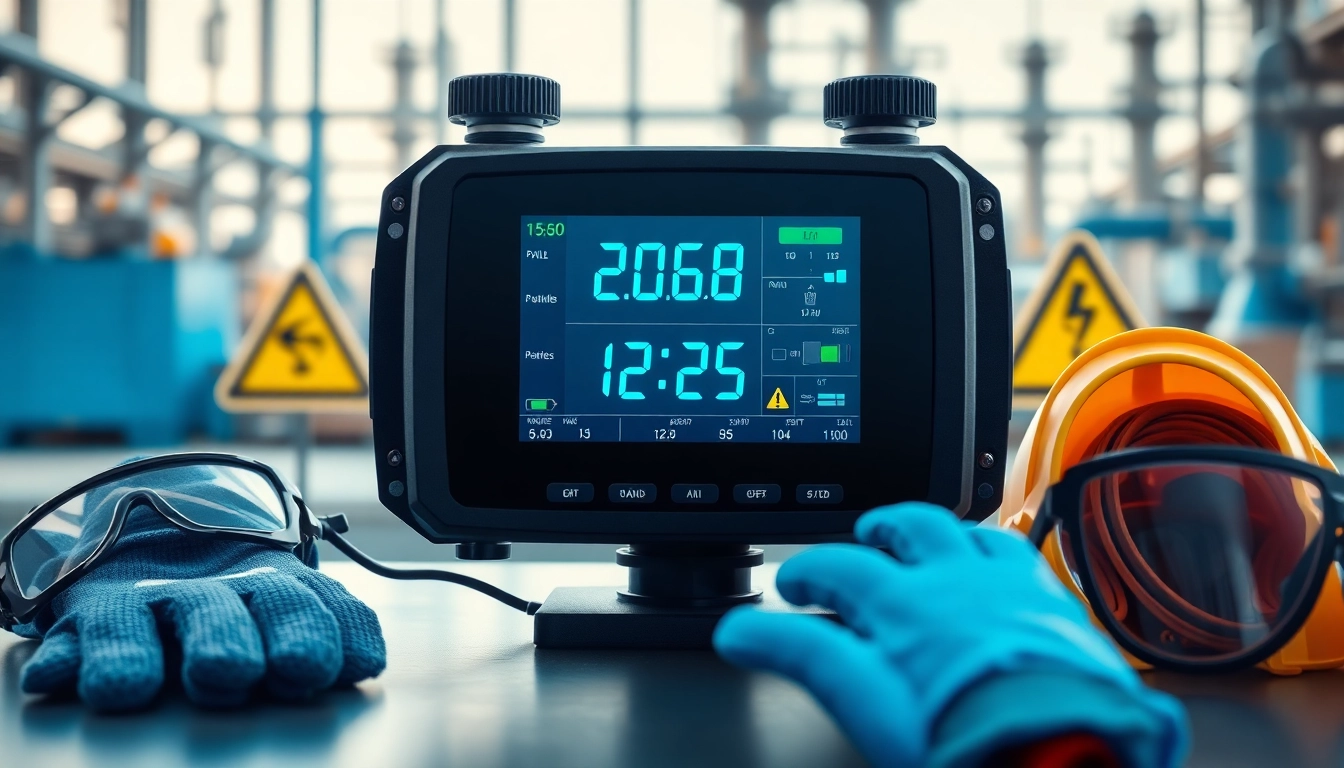Understanding Hydrogen Cyanide Monitors
Hydrogen cyanide (HCN) is a highly toxic compound used in various industrial processes, making effective monitoring essential for workplace safety. A Hydrogen Cyanide monitor is an essential tool in preventing exposure to this lethal gas by detecting its presence in the environment. Equipped with advanced technology, these monitors provide real-time data, ensuring swift responses to any hazardous situations.
What is a Hydrogen Cyanide Monitor?
A hydrogen cyanide monitor is a device specifically designed to detect and measure the concentration of hydrogen cyanide gas in the workplace or ambient environments. These monitors utilize different sensor technologies to offer accurate readings and alert users when HCN levels exceed safe thresholds. Due to the gas’s high volatility and potential health risks, these monitors are widely used in settings where hydrogen cyanide is produced or used, such as plastic manufacturing, mining, and chemical processing.
Key Features to Look For
When selecting a hydrogen cyanide monitor, it’s essential to consider the following key features:
- Detection Range: Ensure the monitor can detect HCN concentrations at levels relevant to your industry standards.
- Response Time: Fast response time is crucial for immediate danger detection.
- Calibration Requirements: Assess the calibration needs, ensuring that it fits your operational capabilities.
- Portability: Depending on usage, portable models may be necessary for on-the-go monitoring.
- Connectivity: Look for options that provide connectivity features, such as alerts via mobile or web applications.
Importance for Workplace Safety
The significance of hydrogen cyanide monitors cannot be overstated. In workplaces where HCN is a risk, using a monitor can mean the difference between life and death. Early detection of hydrogen cyanide levels enables workers to take preventive measures before exposure becomes critical. Regular monitoring can help maintain a safe working environment, comply with occupational safety regulations, and protect the health of employees.
How Hydrogen Cyanide Monitors Work
Basic Operating Principles
Hydrogen cyanide monitors operate based on the principle of gas detection through various methods, primarily involving sensors that react to the presence of HCN. When hydrogen cyanide enters the sensor, a chemical or physical reaction occurs that produces an electrical signal proportional to the concentration of gas present. This signal is then processed, allowing the device to display the concentration level and trigger alarms when necessary.
Sensor Technologies Explained
Hydrogen cyanide monitors typically use one of several sensor technology types:
- Electrochemical Sensors: These sensors work by measuring the current generated during a chemical reaction between hydrogen cyanide and an electrode, providing a direct reading of gas concentration.
- Photoionization Detectors (PID): PIDs use ultraviolet light to ionize gas molecules, producing ions that can be measured to determine the concentration of HCN.
- Metal-Oxide Sensors: These sensors detect the change in electrical resistance within a metal oxide when exposed to hydrogen cyanide gas.
Maintenance and Calibration Best Practices
Routine maintenance and calibration are crucial to ensure accurate readings from hydrogen cyanide monitors. Here are some best practices:
- Regular Calibration: Calibrate the device according to the manufacturer’s instructions, usually at least once a year.
- Functional Tests: Perform routine functional tests to ensure the monitor responds appropriately to known concentrations of hydrogen cyanide.
- Battery Checks: Frequently check and replace batteries as per guidelines to prevent device failure during critical moments.
Applications of Hydrogen Cyanide Monitors
Industries That Require Hydrogen Cyanide Detection
Hydrogen cyanide monitors are vital in several industries, including:
- Chemical Manufacturing: Used in processes for producing plastics, textiles, and other chemicals.
- Mining: Essential for monitoring levels of hydrogen cyanide in mining operations, particularly when dealing with gold extraction.
- Pesticide Production: Crucial for monitoring HCN levels in agricultural chemical manufacturing.
- Fire Investigations: Used by investigators to assess the potential presence of hydrogen cyanide in structures following a fire.
Real-World Use Cases
Real-world applications of hydrogen cyanide monitors illustrate their importance:
- Manufacturing Plant: In a manufacturing facility producing plastic, a hydrogen cyanide monitor triggered alarms when concentrations rose unexpectedly due to a leak, allowing workers to evacuate safely.
- Mining Operation: In a gold mine, HCN levels were continuously monitored, preventing dangerous exposure events during cyanide leaching processes.
Combining Monitors with Other Safety Measures
While hydrogen cyanide monitors are vital for safety, they work best in conjunction with other safety practices, such as:
- Personal Protective Equipment (PPE): Encourage or enforce the use of appropriate respirators, gloves, and protective clothing to reduce exposure risks.
- Emergency Protocols: Develop and train employees on emergency response procedures, including evacuating areas quickly in case of HCN detection.
- Regular Training: Provide comprehensive training for employees on the dangers of HCN, use of monitors, and emergency response measures.
Choosing the Right Hydrogen Cyanide Monitor
Evaluating Your Needs and Environment
Before purchasing a hydrogen cyanide monitor, assess your specific requirements. Consider the environment in which the monitor will be used, including the typical concentrations of hydrogen cyanide, potential sources of interference, and the operational conditions (temperature, humidity, etc.). Understanding these factors will guide you in selecting the appropriate monitor for your situation.
Comparing Different Brands and Models
When it comes to hydrogen cyanide monitors, various brands and models are available, each with distinct features. Compare options based on detection capabilities, ease of use, maintenance requirements, and user reviews to make an informed choice. Consider factors such as warranty and customer support, which can play a crucial role in long-term use.
Cost Considerations and Budgeting
Cost is a critical factor when purchasing a hydrogen cyanide monitor. Higher-priced models might offer advanced features and better reliability, but budget constraints should be evaluated alongside safety needs and regulatory compliance. Consider ongoing costs such as calibration, maintenance, and potential sensor replacements when budgeting for your device.
Future Trends in Hydrogen Cyanide Monitoring
Innovations in Detection Technology
The field of gas detection is rapidly evolving, with innovations promising enhanced accuracy and efficiency in hydrogen cyanide monitoring. Future trends include:
- Wireless Technology: The integration of wireless technology allows for real-time data monitoring and remote access to readings.
- Smart Sensors: Emerging smart sensor technology may improve sensitivity and reduce false alarms by using machine learning algorithms.
- Integration with IoT: The advent of the Internet of Things (IoT) technology will facilitate better connectivity and data sharing capabilities among monitoring devices.
Regulatory Changes and Standards
As awareness of hydrogen cyanide hazards grows, regulatory standards are continually evolving. Future changes may include stricter limits on permissible HCN concentrations and enhanced requirements for monitoring in workplaces. Staying abreast of regulatory updates is vital to ensure compliance and protect worker safety.
Predicted Market Growth and Opportunities
With the increasing recognition of hydrogen cyanide’s toxicity and the necessity of monitoring in various industries, the market for hydrogen cyanide monitors is expected to expand significantly. Companies that innovate and adapt to market needs can find ample opportunities for growth in providing safety solutions.


